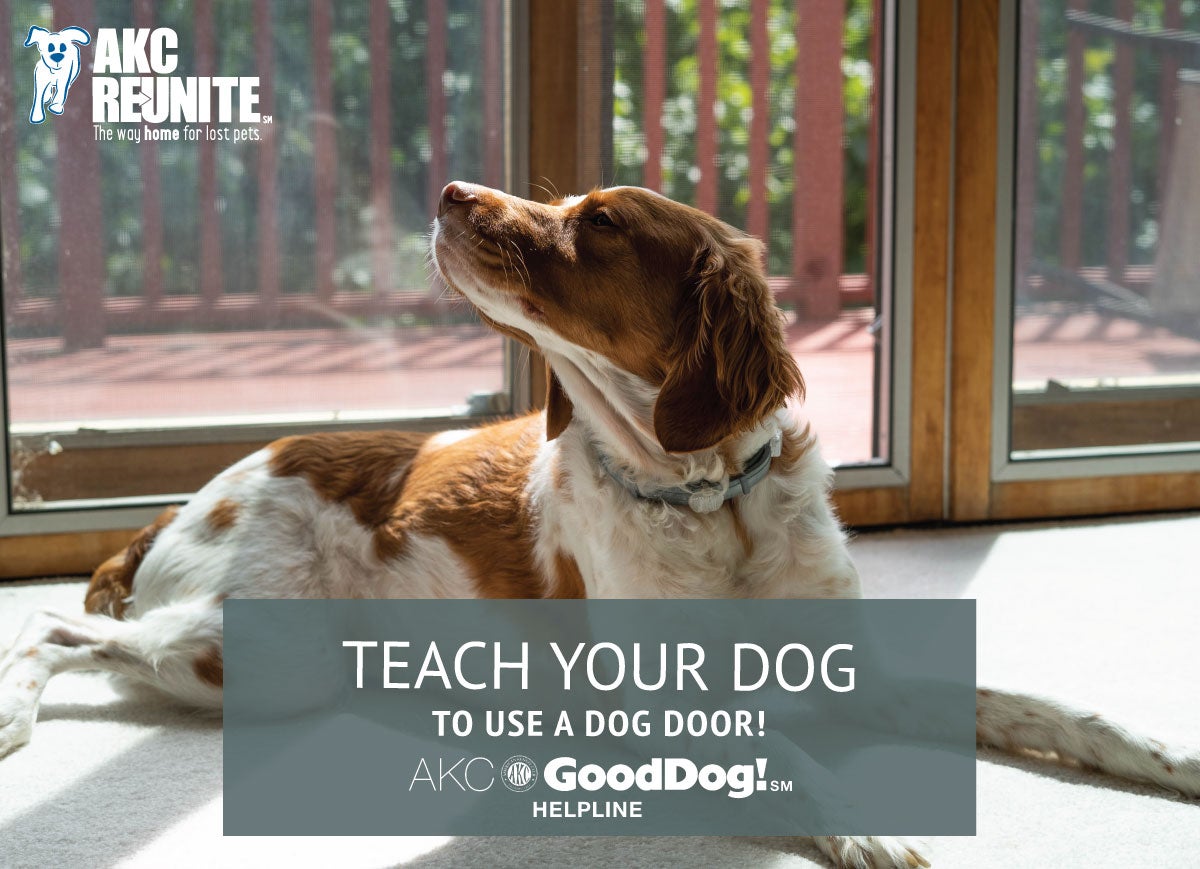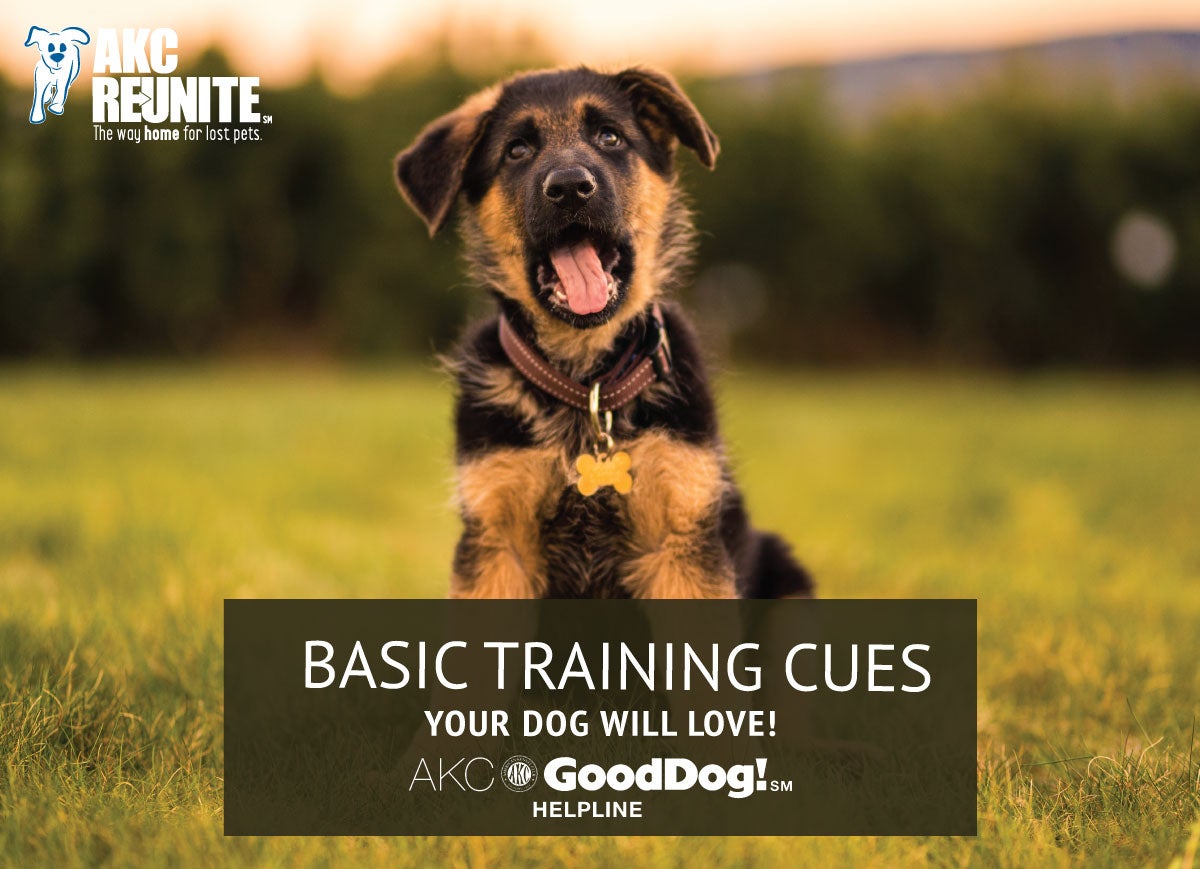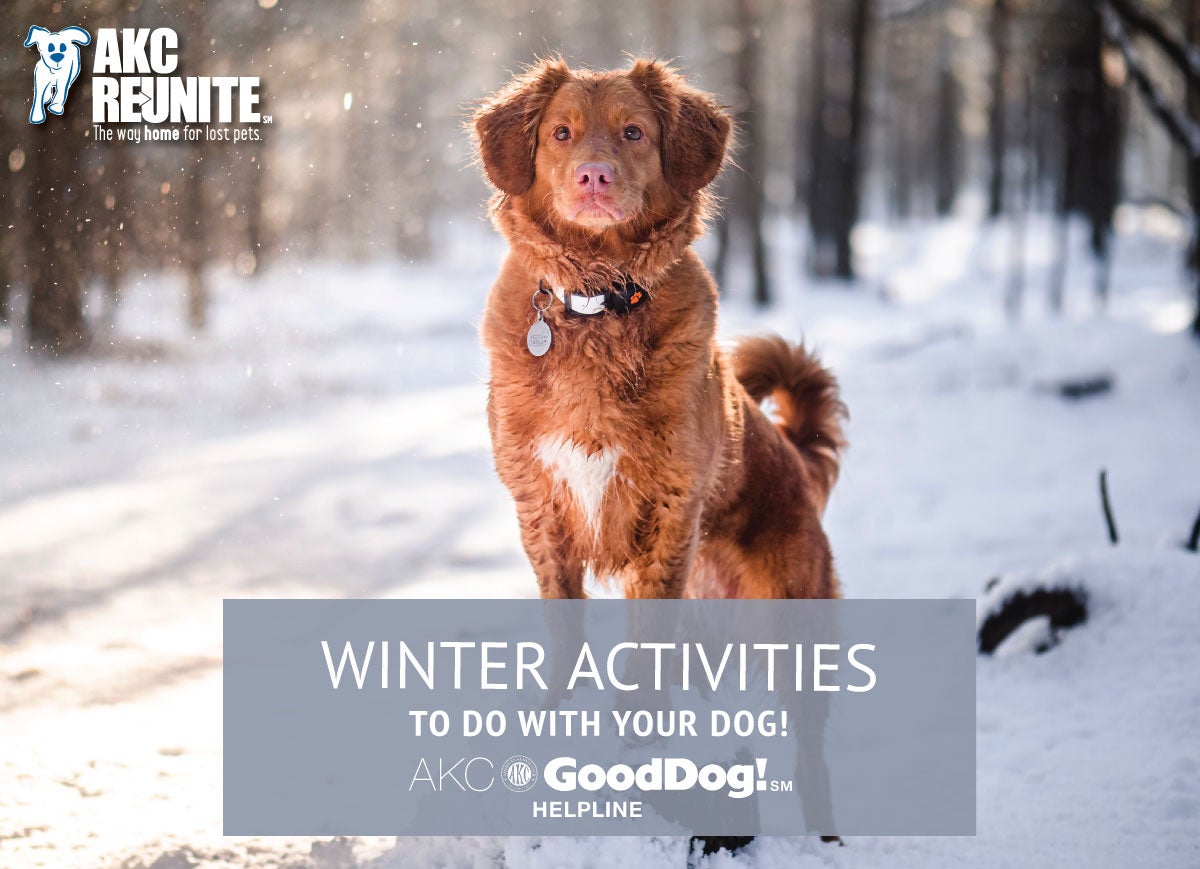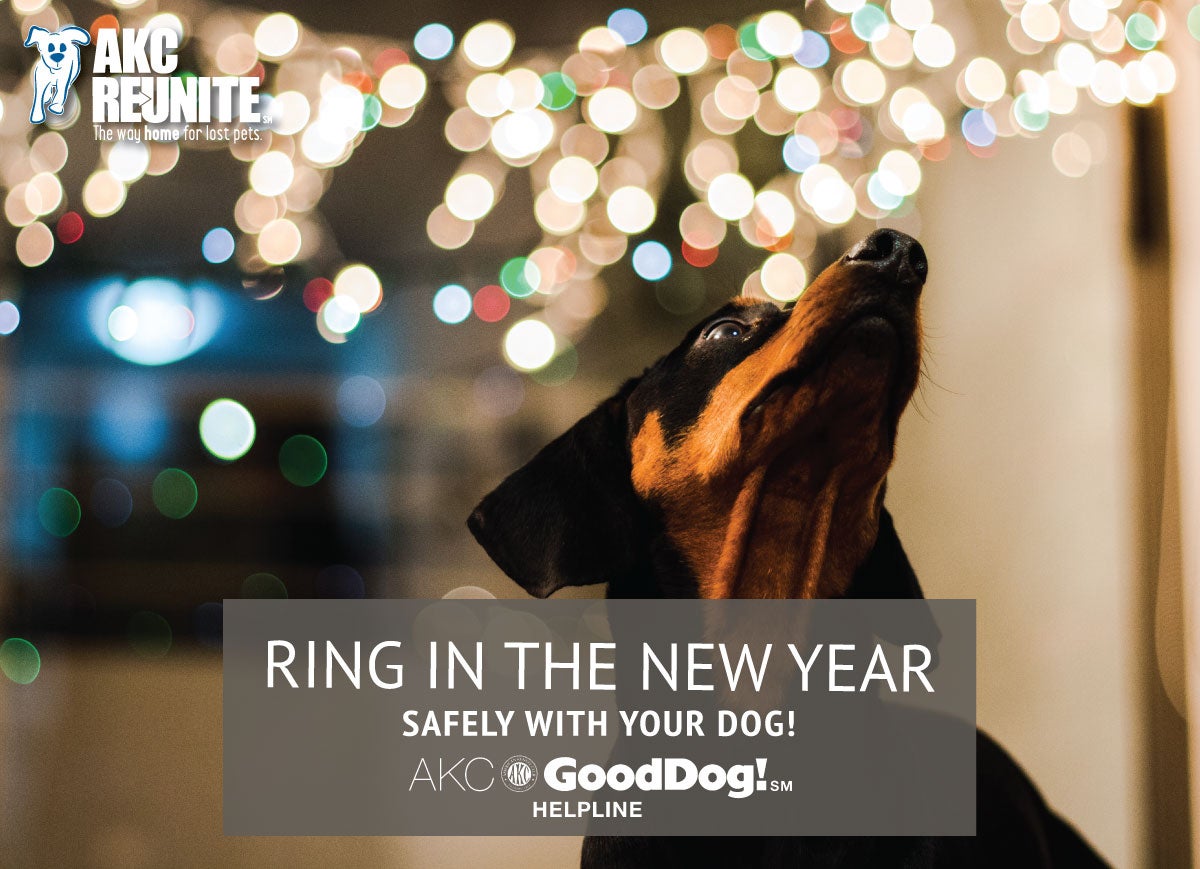Teach Your Dog to Use a Dog Door
Brought to you by the AKC GoodDog! Helpline – the AKC’s 7-day-a-week training support service
By: Hilarie Erb
A dog door can be a big convenience, and most dogs learn to use one quickly. But don’t expect it to mean you’ll never need to get up to let the dog out again!
Choosing the Right Door
Get the right size: Not too big, not too small. The door you choose should be comfortable for the largest dog in your household.
There are many different pet doors, and you can even purchase a storm door that already has a dog door installed. Pet doors can be installed in walls rather than doors, and some are designed to be installed in sliding doors. Pet supply stores and home improvement stores are good places to look.
Training
Once the pet door is installed, start with the door flap secured in an open position. Using high value treats, lure the dog through the door from the opposite side. Having two people, one on each side of the door, can make this easier and more fun, going both in and out. Do not let the flap fall onto the dog. As your dog gets more comfortable, gradually lower the flap, until the dog is pushing through it to get the treat. Be generous with treats, toys and praise. As the dog gets more confident, hold the treat a little farther out, until the dog is going through the door with no reservation. Keep it fun, and do not physically force the dog through the door.
Housetraining
Even if you have a dog door during the puppy’s housetraining, it’s best to pretend that you don’t. Follow a routine and take your puppy out regularly – often every hour during the day. Follow these guidelines for housetraining your puppy: Expert Tips for Potty Training Your Puppy. Teach the puppy that outdoors is the place to potty before teaching how to use the dog door. You need to know what the puppy is doing outside, and be ready to reward and praise right away for success. If the puppy does use the door, that’s great, but try to go out too so that you can reward the pup for pottying outside.
Safety
Along with the convenience of a dog door come potential safety issues. It is not unusual for other people’s pets, wildlife, and even people to enter homes through pet doors. There will be times when you won’t want your dog to go outside unsupervised: at night, when nocturnal wildlife might be in the yard, or when it’s raining or snowing and you don’t want mud tracked into the house, for example. Another possibility is that your dog will bring a “treasure” into the house that you won’t be happy about!
Being able to close the doors securely is a must. Dog doors come with a panel that can be inserted when you need to block access. When in use, be sure that this panel is obvious to your dog and that it is installed on the side that the dog is on. Get into the habit of closing it every night.
Dog doors can be a big help for owners who must be away from home for several hours during the day. It isn’t necessary that the dog have access to the entire yard while you are gone; if the yard abuts a busy sidewalk or road, consider fencing a smaller area. This can help with barking at the fence and protect landscaped areas from digging.
For more tips and advice on training your dog, join the AKC GoodDog! Helpline, a seven-day-a-week telephone support service staffed by experienced dog trainers: www.akcgooddoghelpline.org.
RELATED POSTS
Basic Training Cues Your Dog Will Love
A good relationship with your puppy doesn’t just happen overnight, but it’s easy to build one with simple cues and positive reinforcement training!
Winter Activities to do with your Dog!
Unless you live in a year-round mild climate, you and your dog can get stir-crazy during cold, snowy, or wet winter weather conditions. That's why we've compiled a list of winter activities you can do with your best friend!
Ring in a Happy and Safe New Year with your Dog
Start the new year off with a celebration and some resolutions that will make the party — and the coming year — safe for your dog!





